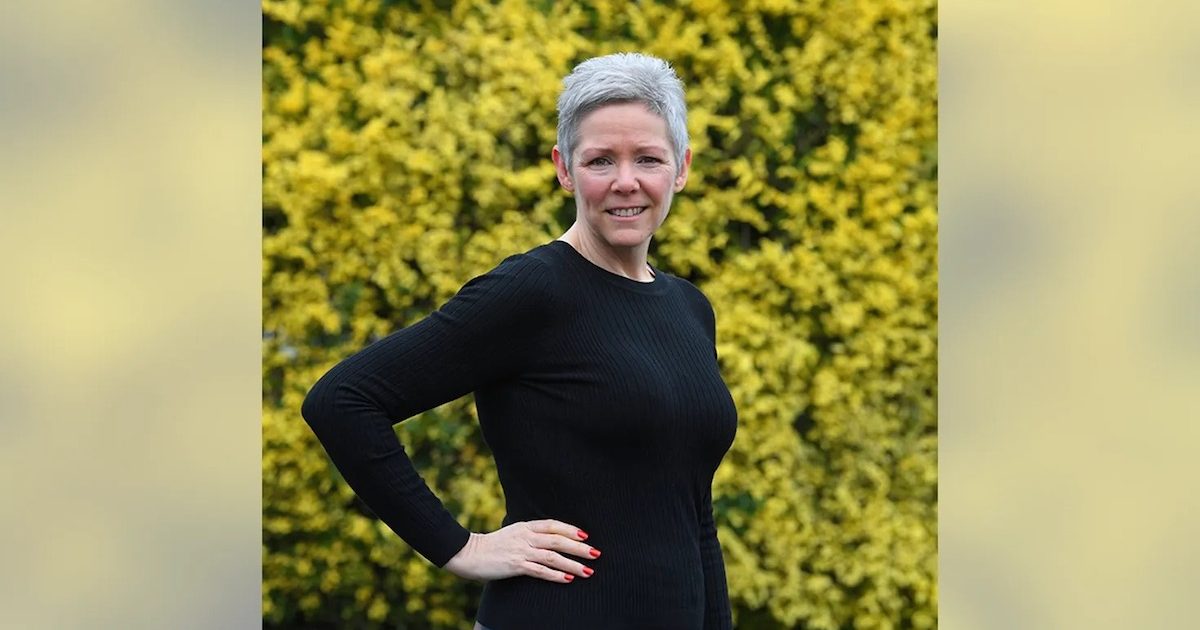Detection Thanks To Weight Loss
- Andrea Richardson, 49, was able to detect a lump on her breast during a self-exam thanks to losing nearly 60 pounds in a weight loss program; she was diagnosed with stage 1 breast cancer.
- While self-exams can be a quick and helpful way in getting to know, and checking on, your breasts, mammograms are still considered the best tool in detecting signs of the disease.
- Another helpful tip when it comes to screening for breast cancer is to consider factors such as dense breasts. If you have dense breast tissue, you may consider getting a 3D mammogram instead of a standard screening.
Based in the United Kingdom, Richardson joined popular weight loss program Slimming World, and in just six short months she was down 57 pounds. She decided to join the program because she was buying bigger clothing sizes and had gained weight during quarantine. Little did she know that shedding the weight would result in more than just a new wardrobe.
Read MoreDue to Richardson’s vigilance in performing a self-exam, the disease was able to be caught in an early stage. She went through two separate surgeries to remove the tumor as well as radiation treatment. Just five months after discovering the lump on her breast, she was declared in remission. “It sounds crazy, but I feel lucky,” Richardson told Fox News. “I now have a new lease on life. Life really is fragile and you should treasure every moment, the good and the bad because that’s what makes us who we are.”
Dr. Senayet Agonafer shares an important PSA about breast cancer awareness
Self-Exam vs. Mammogram
While self-exams can be a quick and helpful way in getting to know, and checking on, your breasts, mammograms are still considered the best tool in detecting signs of the disease. However, it never hurts to give your breasts a self-exam every so often in order to feel if something is wrong, and if so, go get it checked out through a mammogram. Here are some helpful tips in giving yourself a thorough breast exam.
Step 1: Begin by looking at your breasts in the mirror.
Stand with shoulders straight and arms on hips, and look for the following:
- Breasts that are their usual size, shape, and color
- Breasts that are evenly shaped without visible distortion or swelling
- If you notice dimpling, puckering, or bulging, bring this to your doctor's attention.
- Also check with your doctor if a nipple has inverted or changed position; or you see redness, soreness, a rash, or swelling.
Step 2: Now, raise your arms and look for the same changes.
While you're facing the mirror, look for any signs of fluid coming out of one or both nipples (this could be a watery, milky, or yellow fluid or blood).
Step 3: Next, feel your breasts while lying down:
Use your right hand to feel your left breast; your left hand to feel your right breast. Use a firm, smooth touch with the first few finger pads of your hand, keeping fingers flat and together. Use a circular motion, about the size of a quarter.
Cover the entire breast from top to bottom, side to side from your collarbone to the top of your abdomen, and from your armpit to your cleavage.
Follow a pattern to be sure that you cover the whole breast. You can begin at the nipple, moving in larger and larger circles until you reach the outer edge of the breast. You can also move your fingers up and down vertically, in rows, as if you were mowing a lawn. This up-and-down approach seems to work best for most women.
Be sure to feel all the tissue from the front to the back of your breasts: for the skin and tissue just beneath, use light pressure; use medium pressure for tissue in the middle of your breasts; use firm pressure for the deep tissue in the back. When you've reached the deep tissue, you should be able to feel down to your ribcage.
Step 4: Finally, feel your breasts while you are standing or sitting.
Many women find that the easiest way to feel their breasts is when their skin is wet and slippery, so they like to do this step in the shower. Cover your entire breast, using the same hand movements described in step 3.
Dr. Elizabeth Comen shares some helpful tips when performing a self breast exam
Another helpful tip when it comes to screening for breast cancer is to consider factors that during a mammogram, such as dense breasts. Women of any shape or size can have dense breasts, and it’s important to ask about this factor when getting a mammogram. If so, then your doctor may recommend you go through a 3D mammogram, which can sometimes detect signs of the disease in dense breast tissue better than a standard mammogram.
Learn more about SurvivorNet's rigorous medical review process.


